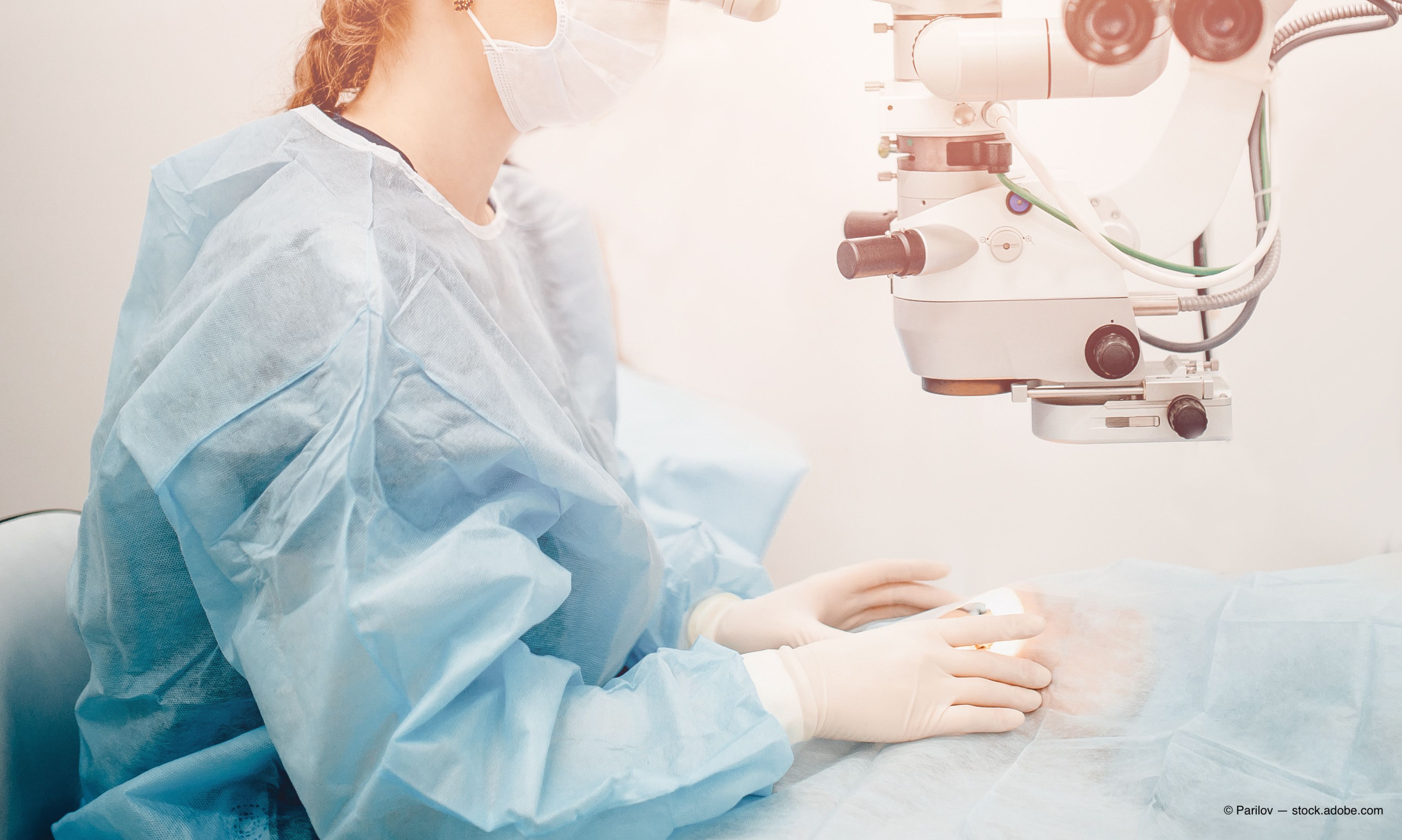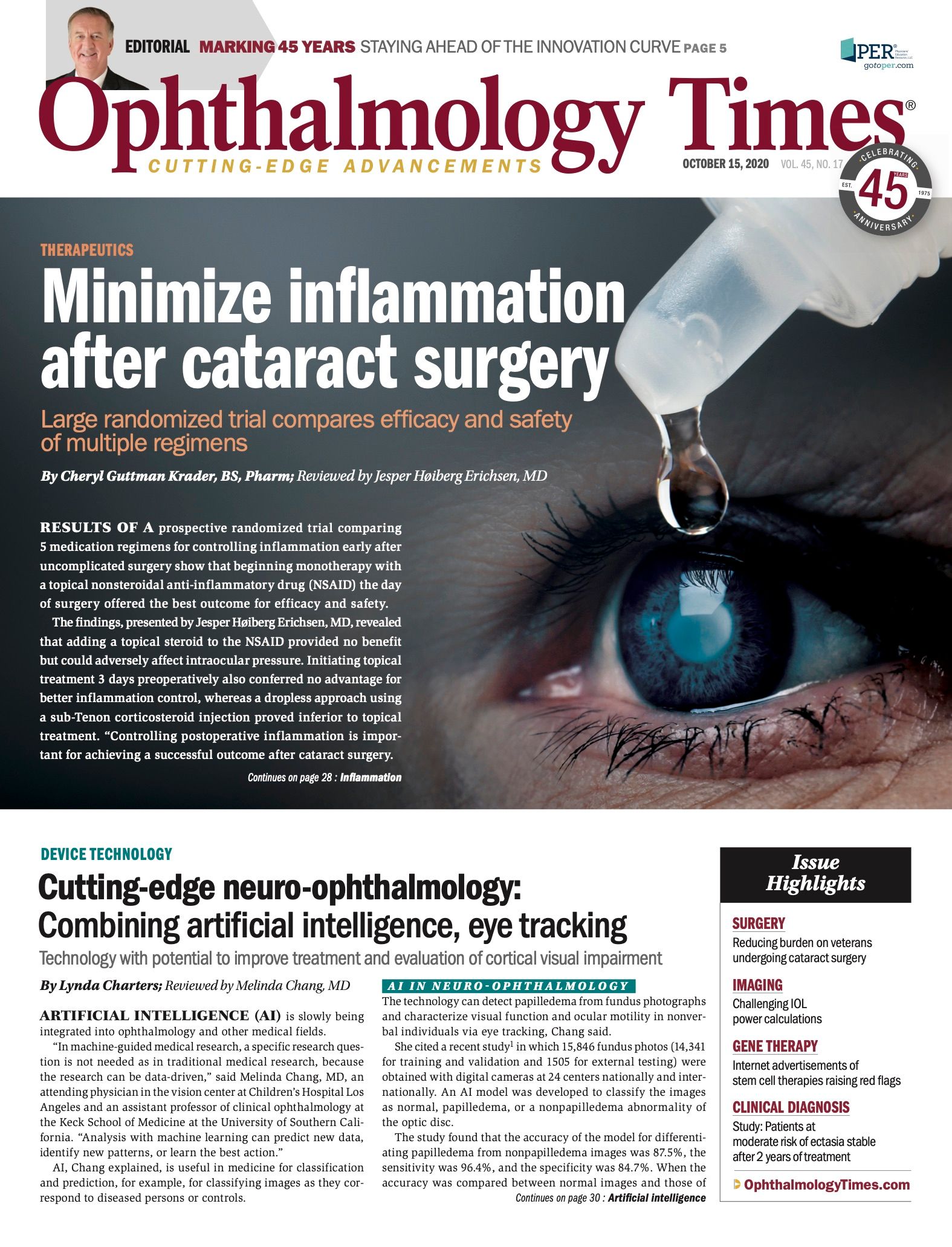Publication
Article
Digital Edition
Rejuvenation of outflow system: The time has come for procedure
Author(s):
Goniotomy-viscodilation cataract surgery controls IOP without medications.

A hybrid minimally invasive glaucoma surgery, dual-blade goniotomy and direct viscodilation of the collector channels with cataract surgery, effectively rejuvenates the outflow system that results in a dramatic increase in the number of eyes that do not require anti-glaucoma medications.
“The trabecular meshwork and collector channels are the conventional outflow pathway that is responsible for at least 50% of outflow resistance,” said Linda Burk, MD, clinical professor of ophthalmology at the University of Texas Southwestern Medical School in Dallas. “The question is: Can this pathway be rejuvenated?”
Related: Study results show that surgical system decreases IOP in patients with POAG
Parallel decisions
During consideration of an improved procedure, she described that the Kahook Dual Blade (New World Medical) can cut parallel incisions, minimize collateral damage, and does not leave trabecular meshwork leaflets in its wake that can lead to fibrosis.
Burk noted that her previous trabecular meshwork specimens were characterized by loss of cells and collagen deposits.
Burk’s search for the improved procedure led to the combination procedure that included removal of the trabecular meshwork with use of the Kahook Dual Blade, which resulted in direct viscodilation of the collector channels and decreased hyphemas.
Innovative technique
In this innovative technique, Burk uses the dual blade to “glide along” Schlemm’s canal to remove the trabecular meshwork.
She adjusts the lens to open more of the canal. Generally, the trabecular meshwork comes out on the dual blade. Healon is injected to define the canal by holding the cannula snuggly against the back wall as more Healon is injected.
At this point, Schlemm’s canal is now a “clean gutter.” The anterior chamber Healon and any residual debris then is removed.
Related:Traditional glaucoma surgery in the era of MIGS procedure
She explained that lowering the intraocular pressure (IOP) allows blood to backflow into the anterior chamber and demonstrate that Schlemm’s canal is open.
Filling the anterior chamber with balanced saline solution shows the episcleral fluid wave.
Burk reported the 18-months results of this procedure in 120 eyes 1 year after the procedure. Half of the patients had moderate to severe glaucoma, and a third had undergone a previous glaucoma surgery.
The mean baseline IOP of 18.8 mm Hg decreased to 16.2 mm Hg at 18 months; 85% of patients achieved this result without the use of medications.
The results showed that 94% had an IOP of 21 mm Hg or lower, and 42% had 15 mm Hg or lower. The reduction in the overall use of medications was significant, with a saving of $84,000 in the first year, according to Burk.
Related: IOP homeostasis in glaucoma: Looking below the surface
“Even patients with advanced glaucoma used no medications, that is, 48% at 3 months and 45% at 12 months,” she said, adding that in the presence of advanced glaucoma the outflow system was thought to be irreversibly damaged. “The outflow system can be rejuvenated in advanced glaucoma.”
An advantage of the procedure under discussion is that it is repeatable, which was done in 4 eyes at 15 months after the initial procedure and then again 8 months later. Three of the patients did not require medications at 2 years.
Conclusion
Burk concluded that combined goniotomy and viscodilation allows access to diseased tissue by removing the trabecular meshwork and access to and viscodilation of multiple connector channels.
“Goniotomy is easily combined with cataract surgery and has a low complication rate and fast recovery,” she said. “Cleaning the gutter and power washing the downspouts is a safe and effective way to rejuvenate the conventional outflow pathway, reduce the financial burden, and improve compliance. It’s time to rejuvenate the outflow system.”
Read more by Lynda Charters
---
Linda Burk, MD
e: aphillips@dallaseyeandear.com
Burk has no financial interest in this subject matter.

Newsletter
Don’t miss out—get Ophthalmology Times updates on the latest clinical advancements and expert interviews, straight to your inbox.




